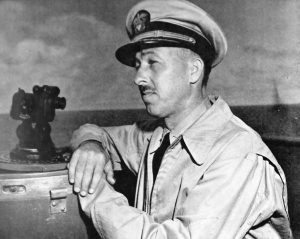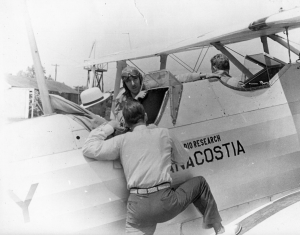30 July 1935: Lieutenant Frank Peak Akers, United States Navy, took off from the Naval Air Station San Diego, California, flying a specially-equipped Berliner-Joyce OJ-2 biplane. With his cockpit covered by a hood to prevent his seeing outside, he flew completely by reference to electronic devices onboard the airplane.
The purpose of Lieutenant Akers’ flight was to locate the aircraft carrier USS Langley (CV-1) at an unspecified position approximately 150 miles to the west of the California shoreline. Then, still flying solely by his instruments, he was to land aboard the carrier.
Akers accomplished his tasks, for which the Navy awarded him the Distinguished Flying Cross.
The instrument flying equipment had been developed by the Washington Institute of Technology, founded by former members of the U.S. National Bureau of Standards. The Navy tested these devices at College Park, Maryland. On 1 May 1934, Lieutenant Akers took off from NAS Anacostia in the hooded OJ2 and landed, “blind” at College Park.
Source: This Day in Aviation c. 2020, Bryan R Swopes
